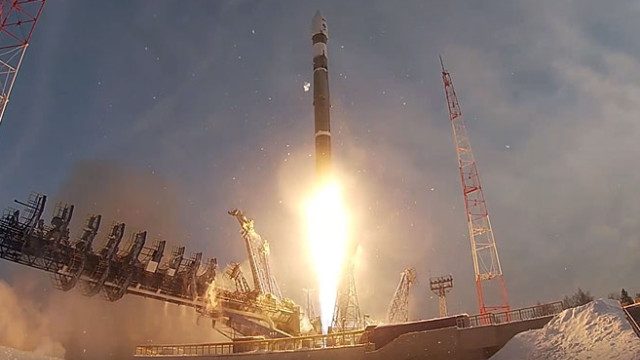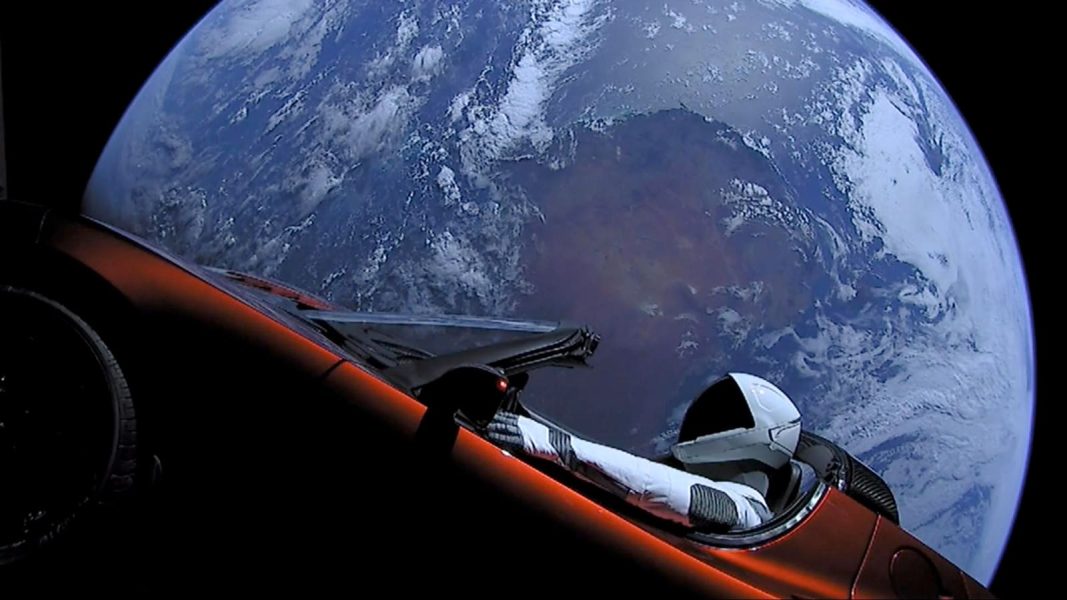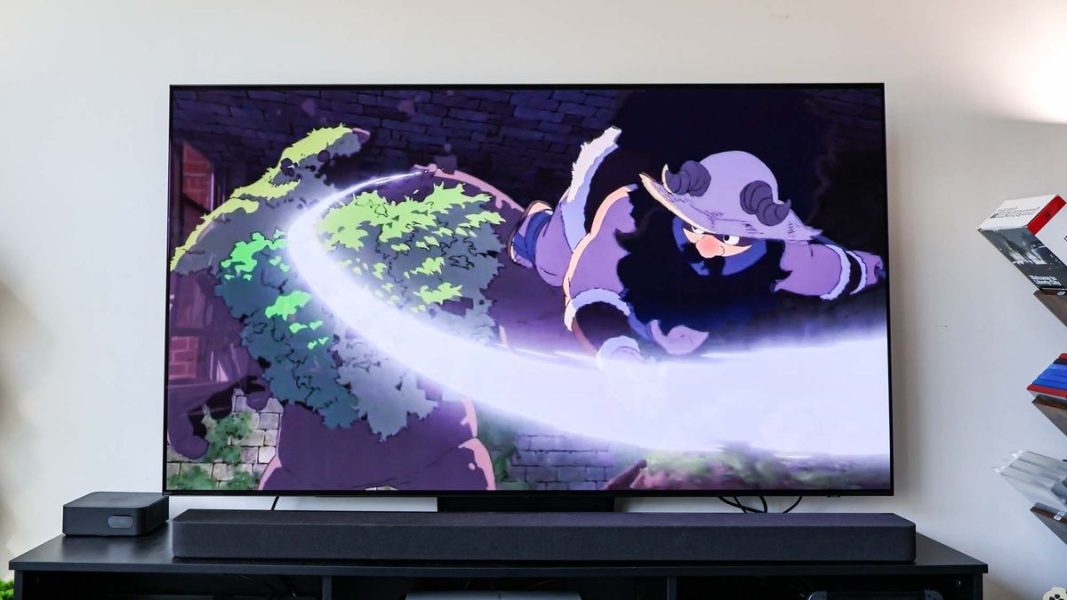Russia plans to target satellites with gunpowder and nails – Bulgarian Military

BulgarianMilitary.com – Military and defence news, analysis, research and data
While the United States continues to push forward with its ambitious “Iron Dome” project to protect Earth from space-based threats, Russia is looking at more unconventional and cost-effective methods to counter space adversaries.While the U.S. is heavily investing in advanced missile defense systems designed to intercept threats from space, Russia’s strategic minds are considering a much simpler, albeit controversial, approach—launching rockets loaded with nails or gunpowder to scatter them across orbit.This idea isn’t new. In fact, it’s been circulating since the 1990s and has seen renewed interest in recent years. The logic is simple: by flooding orbit with debris, enemy satellites would be disabled.On the surface, this seems like a quick and efficient solution that would give Russia a strategic advantage in space warfare. However, when looking deeper into the technicalities, the plan quickly begins to unravel, revealing just how impractical it really is.Imagine a “wall” of metallic fragments, such as nails or even grains of gunpowder, scattered in orbit with the goal of deactivating enemy satellites. To the untrained eye, this might seem like an easy task—launch a few rockets, scatter the debris, and let nature take its course.However, calculations show that achieving even a minimal effect would require millions of these particles, each carefully placed at precise distances in orbit. And while a rocket might be able to launch such materials, maintaining their position in space would be an entirely different challenge. These fragments would quickly become unstable and drift out of orbit, creating chaos rather than strategic advantage.To visualize this, think of an orbital “wall” consisting of pellets or small debris particles placed one meter apart. The math behind the plan suggests that even a modest attempt to create a barrier just 20 kilometers wide and high would require an enormous amount of material.In fact, the number of particles required for such a “wall” is astronomical—potentially reaching hundreds of millions, which would lead to a staggering total weight that cannot easily be launched into space.Even if such an orbital defense system could somehow be constructed, its lifespan would be extremely short. Space debris is constantly affected by gravitational forces and atmospheric drag, meaning any attempt to create a stable structure would be doomed to failure. The “wall” of debris would begin to fall apart as particles were ejected from orbit due to the inevitable instability.Beyond the sheer impracticality of this plan, the consequences of such an action could be disastrous. The creation of this artificial space debris field would almost certainly lead to the “Kessler Syndrome,” a scenario where collisions between satellites and debris generate more fragments, resulting in a cascading effect that renders large parts of low Earth orbit [LEO] unusable.This would not only disrupt the intended target satellites but could also endanger the space operations of the nation that launched the debris field in the first place.Even if the goal is not the permanent destruction of satellites, but rather the temporary disabling of rival space assets, the consequences of such a strategy would likely backfire. The complexity of operating in space requires far more precision than simply creating a cloud of metal fragments.Satellites today are used for everything from communications and GPS to military reconnaissance, making any disruption a massive strategic blow. However, even with modern military technology, there is no easy solution to space defense.A strategy that uses space debris as a weapon may give a temporary advantage, but it would be almost impossible to maintain for a prolonged period without escalating the issue to an uncontrollable level.Another key consideration is the potential use of nuclear weapons in space. While the United States experimented with nuclear explosions in space during the Starfish Prime test in the 1960s, the results were not as effective as one might hope. While the nuclear blasts did disable some satellites temporarily, it was not a clean and immediate process.The radiation from these explosions created a radioactive environment that gradually degraded the electronics of satellites, and this process took time. It was far from the “instantaneous” disabling of space assets that some might imagine in a space war scenario. A nuclear strike on satellites would leave a legacy of long-term radiation, creating a persistent problem for both the attacker and the attacked.When all is said and done, the idea of a quick, low-cost solution to space defense seems far more appealing in theory than in practice. While launching space debris or using nuclear weapons might seem like easy answers, the reality is far more complicated.The complexities of operating in space require precision, long-term strategies, and careful consideration of the consequences. The geopolitical implications of creating a long-lasting field of debris are vast—far more than any temporary tactical victory could justify.Although the idea of using rockets with gunpowder or nails to take down satellites is not widely discussed in the public domain, it is a possible scenario in Russia. There are several key aspects that can be noted regarding Russia’s efforts in this direction.Russia has tested destructive anti-satellite missiles. In November 2021, Russia demonstrated its ability to destroy satellites with such a missile, which led to the creation of a significant amount of space debris.The tests showed that Russia possesses technologies for physically destroying satellites, but traditionally, these missiles use kinetic energy or explosive devices, rather than specifically gunpowder or nails.Alongside missiles, Russia is developing other methods for neutralizing satellites, such as laser systems. For example, the “Kalina” project is mentioned as a potential laser weapon capable of blinding or destroying satellite sensors.These systems are more sophisticated and are not based on gunpowder or nails, but they demonstrate the intensity of Russia’s efforts in the space domain. There is also speculation about the development of nuclear-powered weapons that could be used for blinding, jamming, or frying the electronics of satellites, rather than directly destroying them through explosion. This could be more effective and less risky in terms of generating space debris.Although the idea of using gunpowder or nails as the primary method for taking down satellites is not documented in accessible sources, it is clear that Russia is actively working on various strategies for countering and potentially destroying satellites in space.The key takeaway from this analysis is clear: space warfare is not simply about launching rockets and scattering debris. It’s about understanding the delicate balance of space operations and the long-term risks that come with destabilizing such a fragile environment.While military technologies may evolve, the reality is that space is an increasingly important arena in the geopolitical struggle, and effective strategies will need to go beyond simplistic solutions.In the future, the winners of the space race may not just be those with the most advanced weaponry but those who can operate within the rules of this new frontier, with sustainability and stability in mind. That means understanding that space warfare is not just about disabling satellites—it’s about maintaining access to and control over this vital and increasingly congested domain.***Follow us everywhere and at any time. BulgarianMilitary.com has responsive design and you can open the page from any computer, mobile devices or web browsers. For more up-to-date news, follow our Google News, YouTube, Reddit, LinkedIn, and Twitter pages. Our standards: Manifesto & ethical principles.
Most popular
Two British jets ambush Russian fighters with transponders…
US P-8 Poseidon searches for Russian sub 66 miles off…
Russia gave US the sonar signature of Yasen-class Kazan…
$168K for first downed Ukrainian F-16, $5.6K for each next…
Su-30MKI rapidly loses altitude after thrust vectoring…
‘Reports’ come: ‘RQ-4B shot down over the…
Israel permanently suspends combat flights with the F-16Cs
China claims its Su-27 Ultimate Flanker surpasses…
200 Northrop Grumman B-21 Raider bombers fall short of the…
China: Russian Su-57 to hunt SAAB 340 AEW&C after A-50s…
Source: https://bulgarianmilitary.com/2025/02/02/russia-plans-to-target-satellites-with-gunpowder-and-nails/






